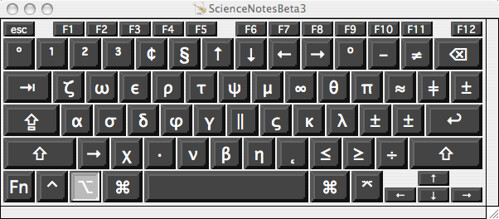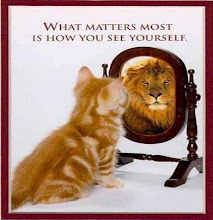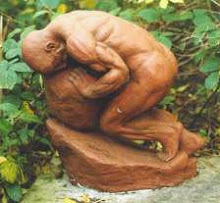Yeah! Start producing study aids now that will help review the week, or weekend before the test. Don't, don't, don't take notes on a laptop. Use 8.5x11 or notecards. Preread means skim, and then, from the time you're in lecture on, all 'studying' should be focused on creating a product you will use to review for the week before the tests, like a big stack of notecards, diagrams, that sort of thing. Handwrite and draw it all. The tactile and visual feedback is rich input to your brain.
Physio and Biochem are straight notecard and diagram. Biochem, get Lehninger (all other biochem texts plagarize this guy) and start drawing glycolysis, kreb's cycle, electron transport chain, gluconeogenesis, glycogen synthesis, structures of the sugars (glucose, galactose, ribose, heparin, heparan sulfate, amylose, amylopectin, collagen, etc). Draw the twenty amino acids and the nucleic acids. Put all these on flashcards. If they're to big (glycolysis, Kreb's cycle, etc) draw them on 8.5x11. Over and over.
Physio: a big smludge of stuff. Kidney tubule. Learn the transporters inside and out. Same for myocardium. If you don't understand a synapse yet, that's about as priority one as it gets.
Neuroscience: Haines is the the textbook to get, but they all go into to much detail. You can start administering these quizzes to yourself (you have to click around a bit, but they're there). The site is awesome. Find the quizzes. Learn all the structures in the quizzes. Even if your prof swears you don't need to know it. If you try to not learn, you'll waste time and brain cells thinking "I don't need to know this that I'm not supposed to know. But I know it. Dammit". I found it a long time ago, then our neuro prof was using it independently for some of the videos. I suggested it to the students at A&M; now their prof is using it too. Also, Harvard Whole Brain Atlas.
Histology - too complex to draw. Find images on Google Images (you'll find the high-yield sites as you go) and compile them in powerpoint. Slide with the image, next slide has the same image, but with various structures identified. Every cell type you can imagine. Repitition, repitition, repitition.
For Anatomy, get Netter's Atlas of Human Anatomy, 3rd Ed, and quiz yourself by placing your hands over all the names of structures, and try to identify them. Every single one of them. They will all be on the test. You think I'm kidding or exaggerating, but I'm not. Don't worry though, there's a fair amount of repitition. You'll see how this works once you get the book. Don't get a textbook of anatomy until the prof tells you which one to get. They all suck. Bad. I own most of them. That's not a joke. I have been collecting, for years, virtually every anatomy text and atlas, every book on surgery. I've got first editions of Brodel illustrations. The textbooks are vacuous except maybe the highlighted 'clinical correlations' boxes, or whatever they call them in whatever text. You can be sure that stuff (torticollis, claw hand, whatever) will be on the test. Along those lines, don't get more books than necessary. You've got to much to learn to read anything twice. Make the study guides. If you run into something you need a second source on, go to Google. Repitition, repitition, repitition. If anything you're doing takes a lot of time, stop. Computer drawing programs (OneNote, Illustrator, etc) are a good example of this. I can draw a perfect circle in Illustrator faster than I can with a pencil. But I don't need a perfect circle. I only need a 80%, 90% circle. I can do that with a pencil in one stroke.
Most people in any organization pass on the same lore and legends one year to the next. It's all fluff. The smart ones lie because they don't want to spend time helping the people who are struggling. The strugglers lie because they don't want to let on they're sucking. The professors lie because they are taking gentle vengence on you for whatever they went through in graduate school. If you stop and listen you'll be amazed at how much fluff is presented as deep insight. It's really just the same lore and legend. They'll all talk about the ease of learning the brachial plexus once you figure it out. They'll all ask you five times about which nerve root is sensory, which is motor. They'll all tell you about freshman's nerve (a tendon), the rise of antibiotics, anesthesia, and how they revolutionized surgery. Blah, blah, blah. Learn what's going to be on the test. Cold. By repitition.
If you can, seriously consider just listening to the audio if they provide it. Listen to it at 1.5 times speed with the prof's powerpoint slides (most of them provide these through a website somewhere), at home. I'm the one that does the recording for our school, so I haven't tried this much. Because I always go to lecture, so I can record it. If this works, cool. Otherwise, go to lecture and don't take a laptop. At least, don't use a laptop while you're in lecture.
Read the medical education posts on this blog if you want some more stuff.
People will give you lots of study tips. Like this. If it doesn't match what you've been doing, be highly suspect. If you got As without group study, don't start now. If you got As without a computer, don't start now. If you eat seven pieces of Lindt chocolate when you study every night, don't stop.
For the non-traditional students: be especially suspect of advise from the professors. They spend most of their time advising the 80% who are between 22 and 24 years old. Nothing against 22. I was 22 once. I wish I was 22 when I went to medical school. I really do.
























































